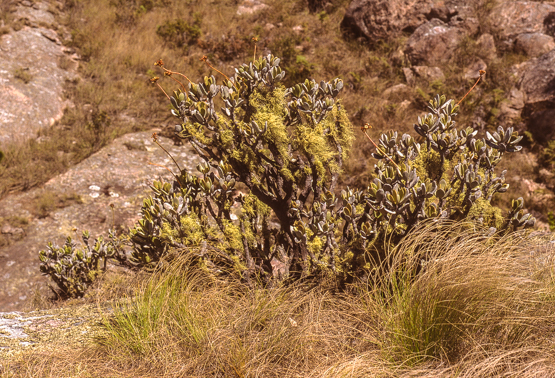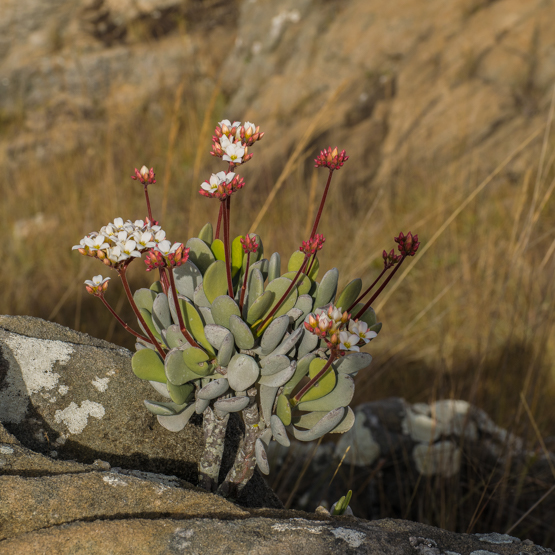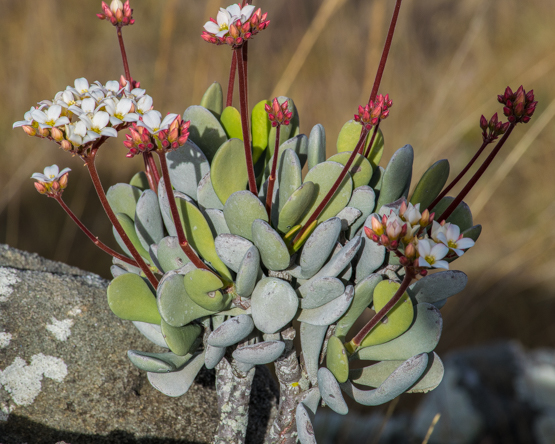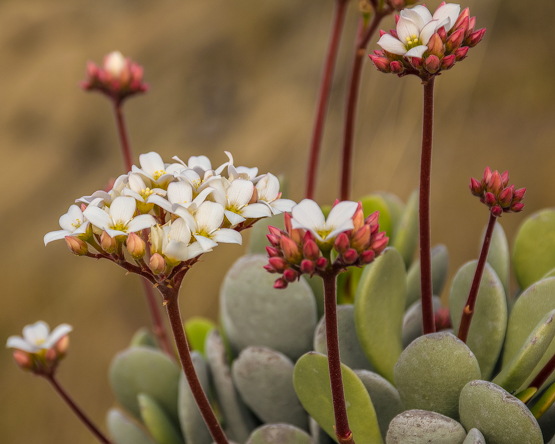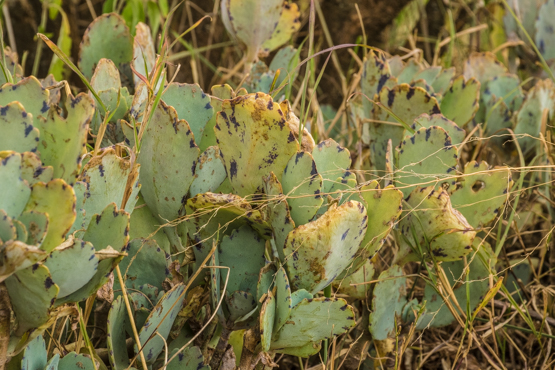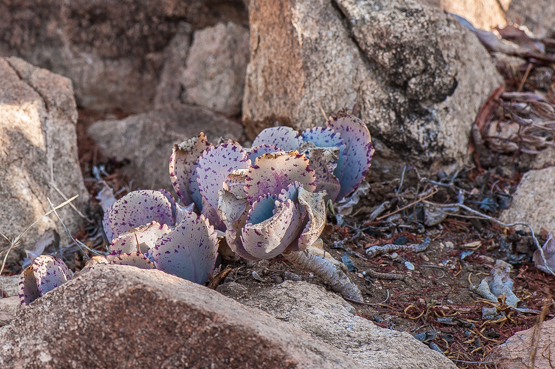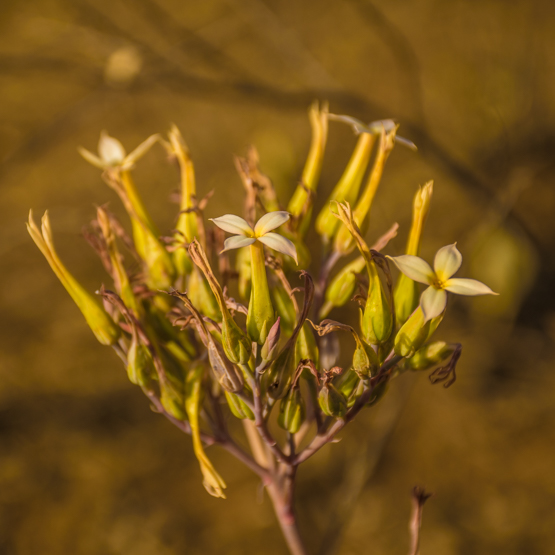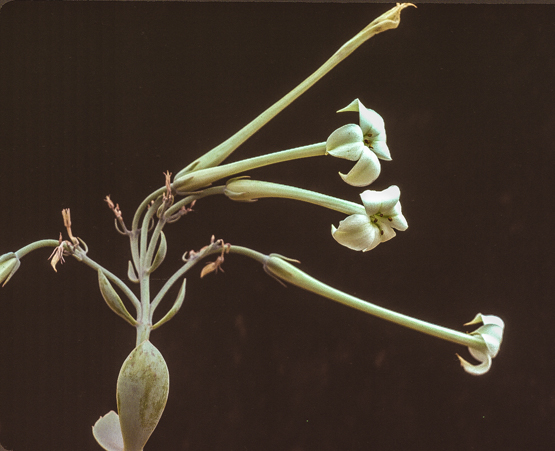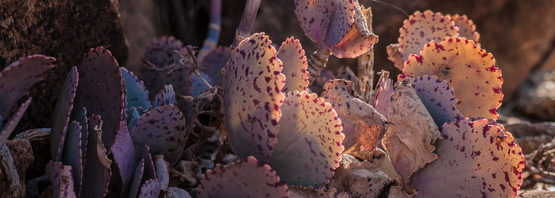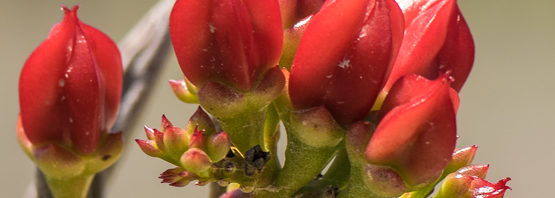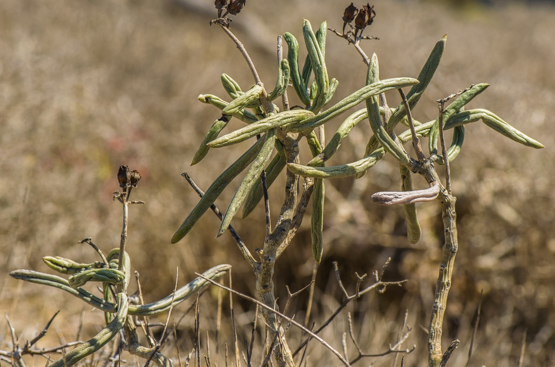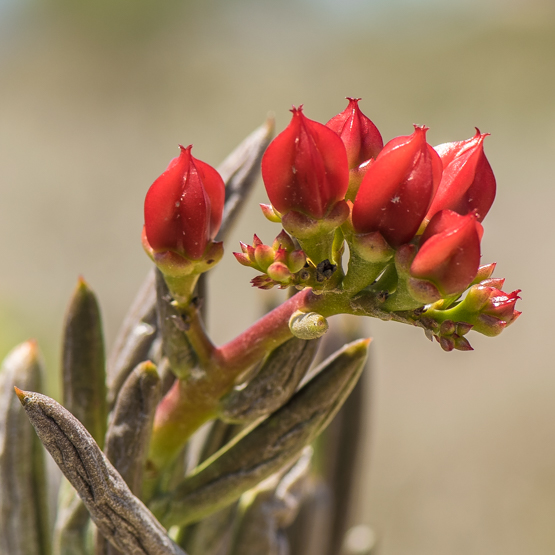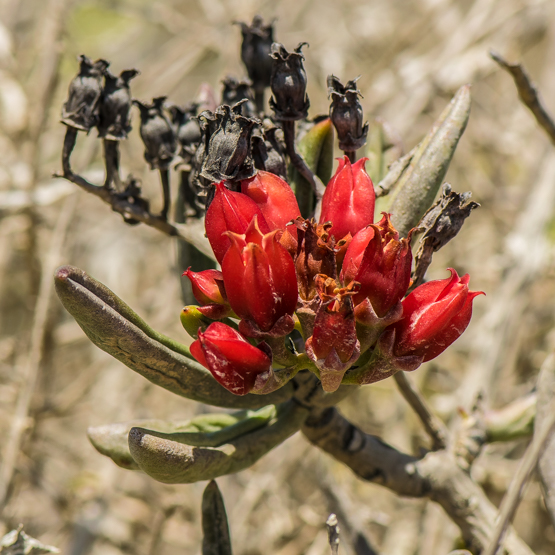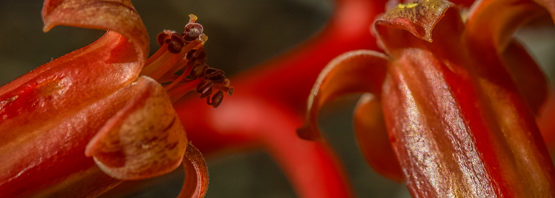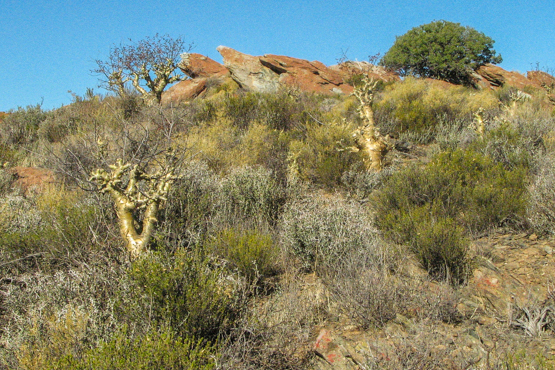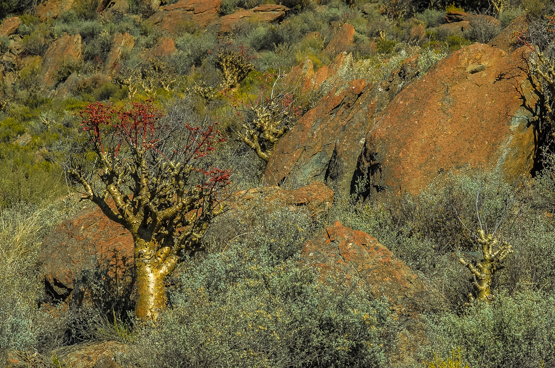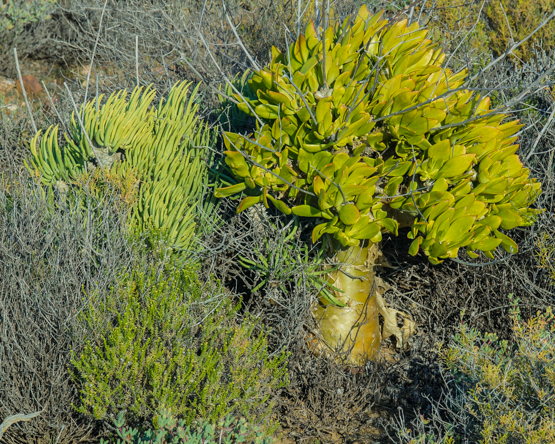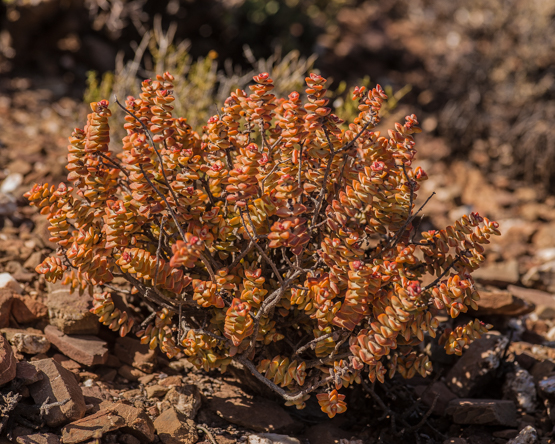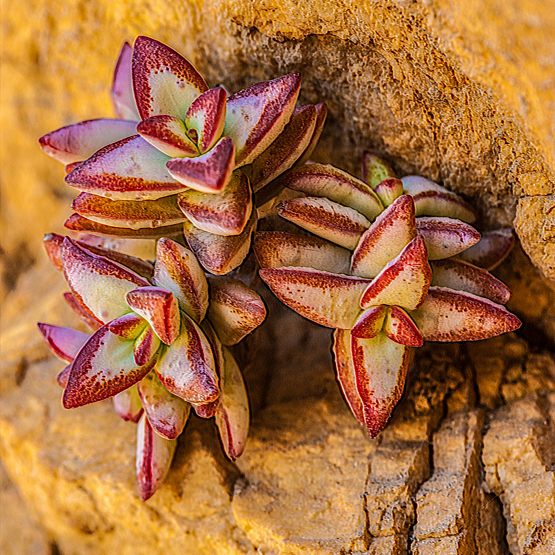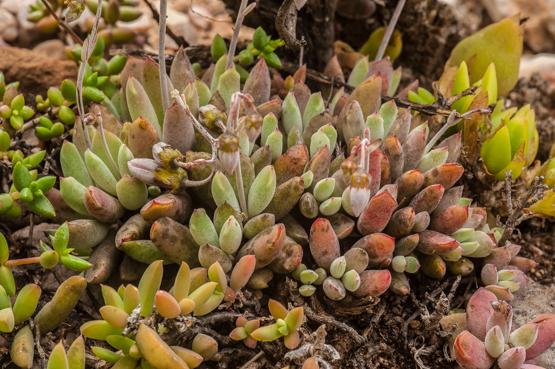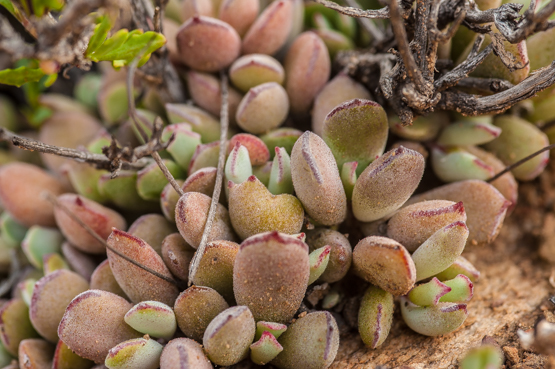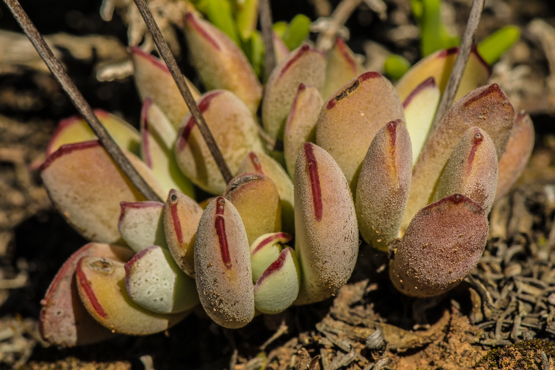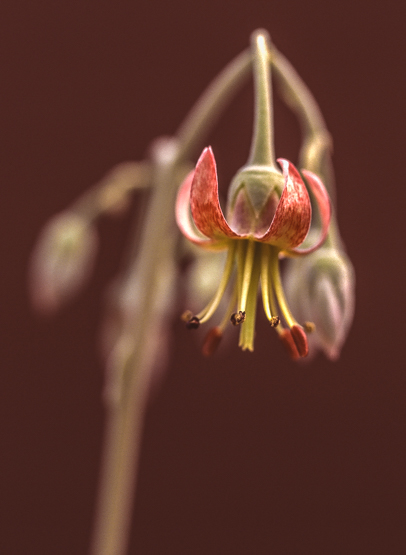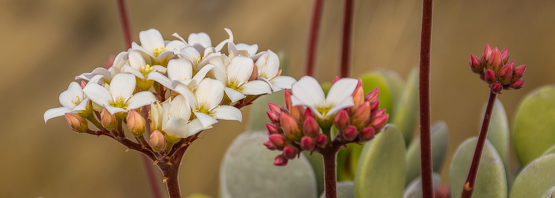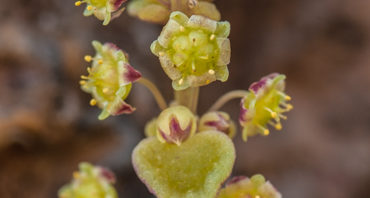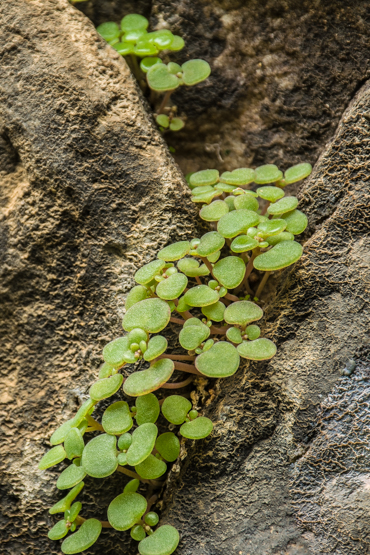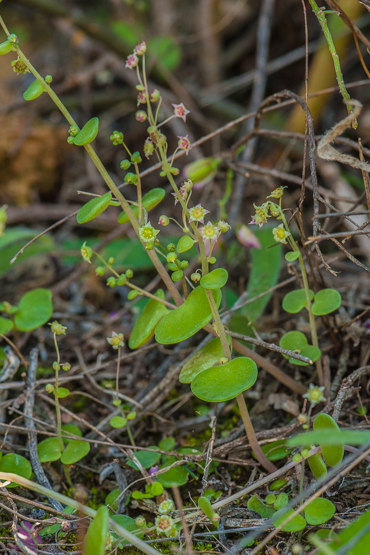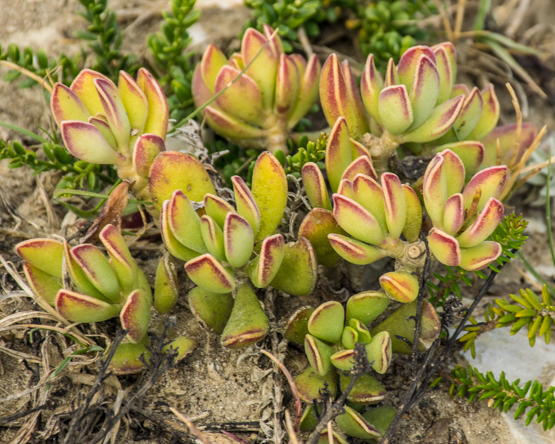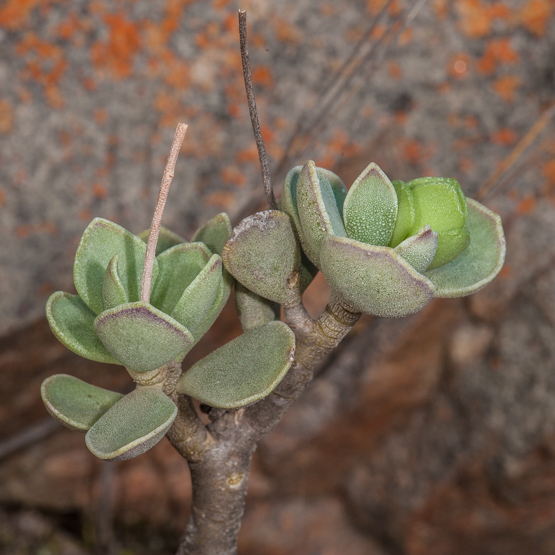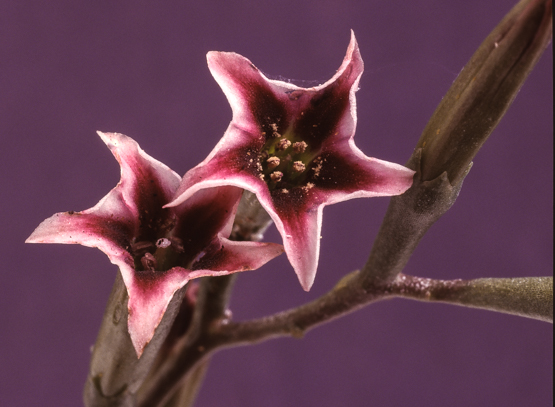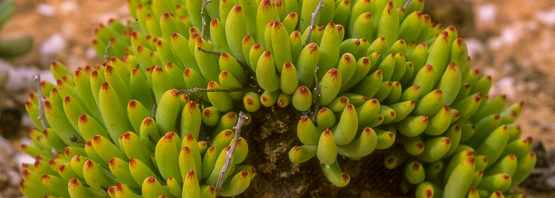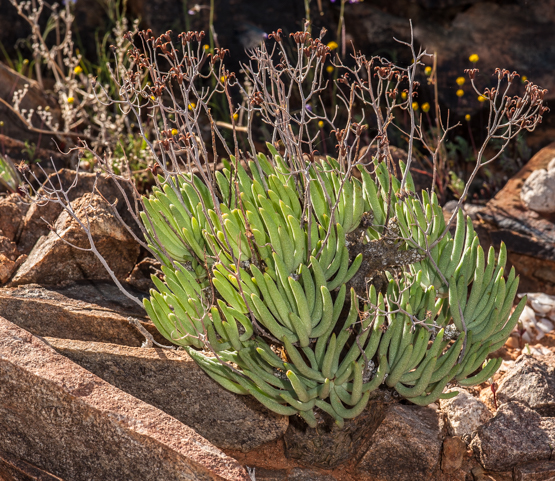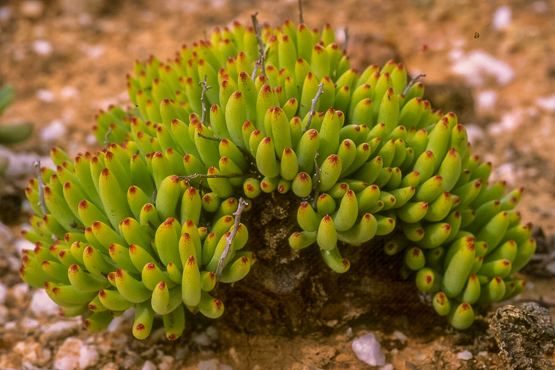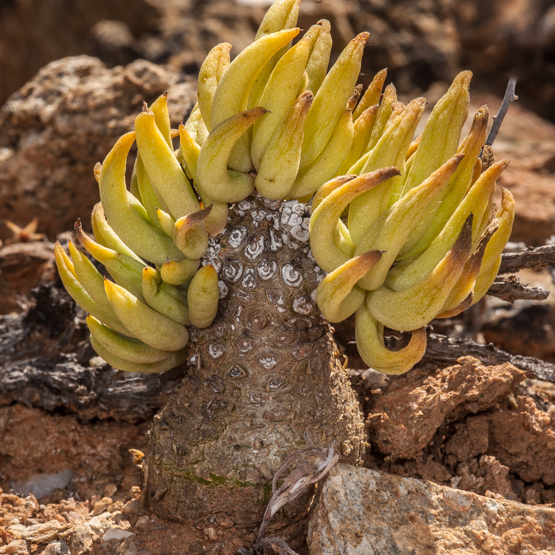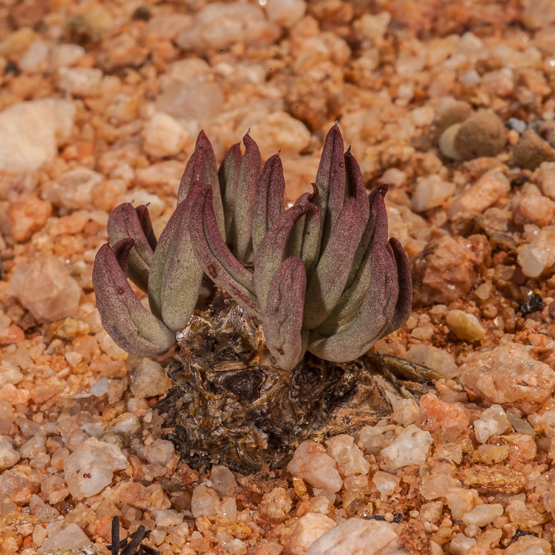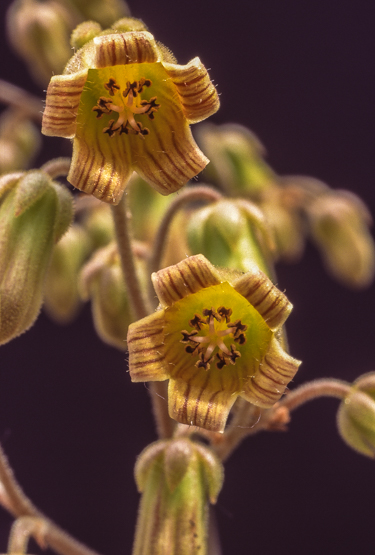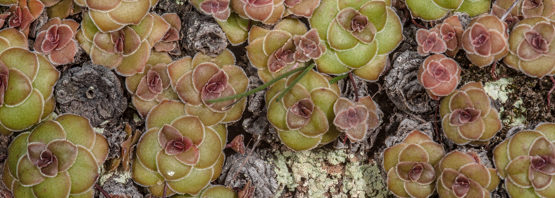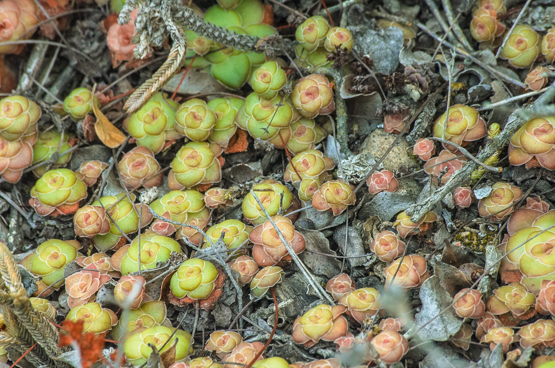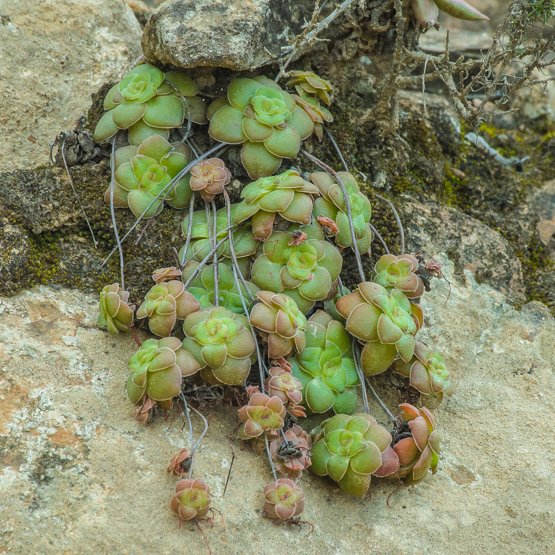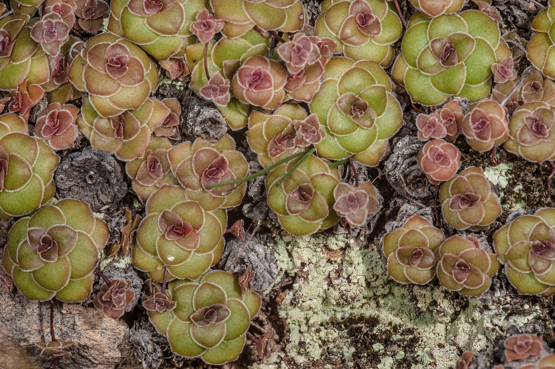When at the end of my recent trip to Madagascar we had some time left, we decided to go to Antsirabe to visit Mt. Ibity. I had been there 19 years ago to see the famous Pachypodium brevicaule in its habitat and this seemed a good opportunity to renew the acquaintance.
As the area is protected nowadays, it took us a while to find a guide and get the necessary permissions, but in the end we were able to start the ascend.
Just before we arrived at the level were we could expect the Pachypodiums, I noticed a little succulent in a rock crevice. My first thought was: “An Adromischus?”. Well, probably not, as that genus is not known to occur in Madagascar. A bit further up we came across a mature specimen and one look at the flowers confirmed that it was a Kalanchoe. But which one? Fortunately there is a book on the Kalanchoes of Madagascar and that quickly answered the question. (When I looked through slides of my first visit to the country, I found one of the same species photographed further south at a place 15 km West of Ivato; see first picture)
Kalanchoe integrifolia is a polymorphous species which is slow growing and may become very old. It may reach a height of up to 1 m.
The leaves show a great variation in appearance depending on the age of the plants. They are 3-11 cm long and 0.8-2.5 cm wide, egg-shaped in young plants and becoming almost cylindrical as the plants get older.
The flowers may be white, yellowish, pink or dull reddish and are slightly pubescent.
The species occurs in the Antsirabe-Ambositra area on quartz, gneiss and basalt rocks at an altitude of 1200- 2000m. It is rare and probably endangered by environmental
changes.
